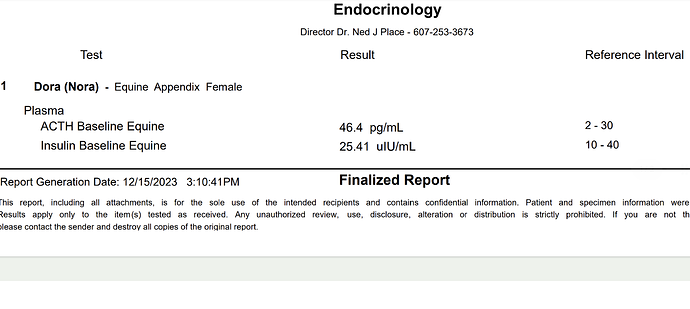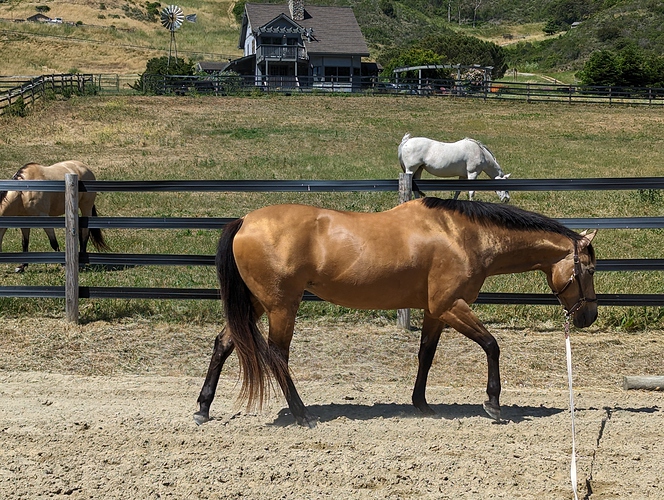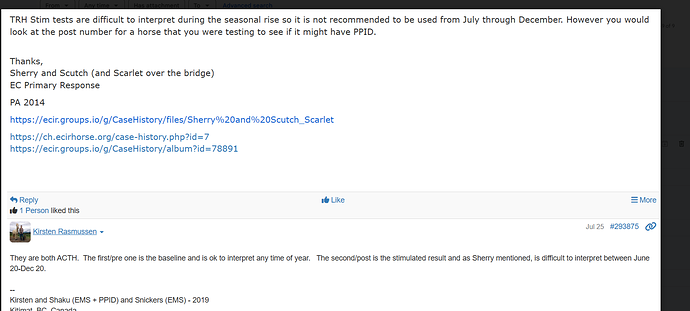Test results came back today:
Vet says we should do the TRH test during spring vaccines or we could do it sooner if I wanted. I said we can wait, but should we do it sooner?
Meanwhile, what’s the current science around feeding the maybe/slightly PPID horse? She’s currently on Strucomix Senior, grass hay with a small flake of alfalfa once daily, 24/7 turnout in Northern CA (some grass October-January, lush grass January-March, no grass July-October).
20yo Appendix mare, started showing signs of lethargy/exercise intolerance (meaning just lacking energy) 2 years ago. This year had some lacerations that took just too long to heal, high FEC, and then grew a yak of a coat this winter so I decided to test her.


 )!
)!



 I WOULD test her fairly regularly though, properly fasted (hay-only), just to keep tabs on whether that’s changing.
I WOULD test her fairly regularly though, properly fasted (hay-only), just to keep tabs on whether that’s changing.